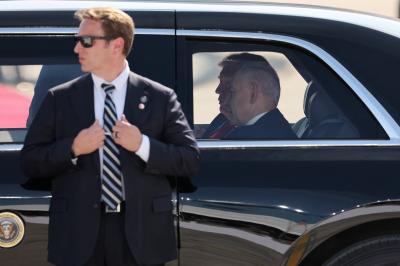Certainly, the deceleration of China's economic engine might prompt New Delhi to draft a strategy aimed at undermining China's global industrial supremacy, supported by the United States. Since its rise to the rank of major global economic powers, following the U.S., China, Japan, Germany, and the UK, India has found itself at the center of discussions among industrialized nations, orchestrated by Washington. The option of a shift towards South Asia over the Far East emerges, with the backdrop of India potentially taking over from China as the world's manufacturing pivot. With a population nearing 1.5 billion, India is working to bridge the significant gap between the two giants, facing countless constraints that hinder its ability to capitalize on the various resources from China.
To achieve this, India, in search of natural resources absent in China, will need to reconsider its traditional approach based on basic raw materials, to realize its industrial ambitions. In the coming years, it will strive to attract foreign investments and implement measures to reduce global reliance on the Chinese industry, which has a strong market presence. This will involve strengthening ties with Washington and its allies.
The Joe Biden administration initiated a move to restrict American investments in China, a strategy that led to a significant reduction in capital inflows since 2021, aiming to curb Beijing's use of American funds to bolster its military power. In August of this year, the White House further tightened the grip on U.S. investments in China, especially in the fields of precision electronics and artificial intelligence. However, Washington has faced and continues to grapple with significant challenges over the past year due to scarcity and soaring product prices. The short and long-term implications of this decision foreshadow major challenges ahead.
In the short term, the tight weave between the financial mechanisms of the U.S. and China requires Washington to exercise caution in its strategic moves to avoid harming the Chinese economy, which is showing signs of stagnation. This caution also extends to the pressing requests of American corporate giants with massive commercial stakes that surpass the budgets of many nations. Consequently, the U.S. Treasury Department spokesperson emphasizes the need to maintain global economic exchanges. The U.S. acknowledges that over the decades, China has solidified its dominance in the global markets, making its reduction all the more complex. It's worth noting that the strategy Washington employed, rooted in the Cold War era against the Soviet Union, played a pivotal role in China's rise and propelled it to its current heights.
In the long run, the prospect of competing with Beijing according to the plan to disengage from Chinese production requires industrialized nations seeking a dominant position, like India, to wage fierce competition and mobilize vast capabilities. This mission proves challenging and differs significantly from China's path. While India's ruling party, the "Bharatiya Janata Party," led by Prime Minister "Narendra Modi," has close ties with Washington and the West, it could catalyze essential reforms. However, China holds multiple advantages over its rivals, especially India, including its control over the private sector and its ability to quickly mobilize a plethora of resources. In contrast, New Delhi's economic model, heavily influenced by the West, primarily aims to generate significant returns for investors, ensuring the sustainability of investments.
Therefore, in the foreseeable future, both short and long term, India is unlikely to surpass China. China will continue to reign as the undisputed leader of the global manufacturing scene for an extended period. The barriers set up around Chinese exports have already had adverse effects on American businesses themselves.
Former U.S. President Donald Trump had issued threats against American companies, warning of the loss of government contracts if they continued to operate in China. He also dangled the prospect of tax incentives to encourage these companies to move their factories from China to the U.S.
Today, a new dynamic emerges: exploring territories outside the Chinese realm to assume this role. Such a move largely hinges on the availability of low-cost labor and technical skills. India, in particular, is at the forefront, but the persistent challenge remains raw materials.
Meanwhile, China has recently extended its influence in the Persian Gulf, leading some analysts to speculate it might become an alternative to the American market. This attractive outlook is bolstered by sustained consumer demand. Governmental agreements between China and Saudi Arabia spanning various sectors indicate the envisaged scale of China's presence in the region.
In conclusion, the stakes are clear: a fierce battle for market share and consumer conquest. In this context, the U.S. and the West cannot rely on India to replace China, given the previously discussed data. Washington's recommended approach will be more about devising a plan to diminish China's industrial hegemony rather than replace it with another. Indeed, as the saying goes, "a journey of a thousand miles begins with a single step."
Please post your comments on:
[email protected]
 Politics
Politics








